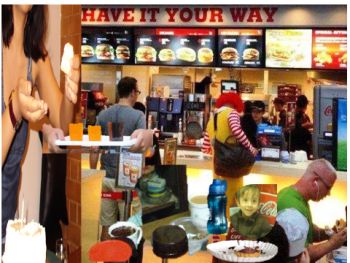Insulin Resistance Associated with High Fructose Intake
by Ren Chats
(Denmark)
High fructose intake has lately been attributed to the rising incidence of metabolic disorder, obesity and type 2 diabetes among children.
But fructose, the sugar naturally found in fruits, has been an integral part of human diet for centuries!!!
Yes, that's how the debate starts. Several causes have been reasoned out, studied and questioned, while the threat to child health continues to rise worldwide.
Over years our eating habits have changed, and so have changed the variety of foods available in the market. The fast lifestyle of the modern society has necessitated frequent consumption of sweets and beverages that are available over the counter, and they often contain fructose in high concentration.
Why is fructose used as a sweetening agent?
1. Fructose is 30% sweeter than normal sugar when compered by weight:
Normal sugar, also known as sucrose, is a disaccharide composed of glucose and fructose in equal proportion. Glucose is less sweet than fructose on weight basis.
2. Misconception:
As it is the natural sugar in the fruits, it is mistaken to be healthy and less fattening. But in contrast to glucose, fructose metabolism in the body differs markedly.
Study by Kathleen A. Page et al shows that high fructose intake results in different pattern of blood flow to the specific regions of the brain, which are responsible for secreting satiety and appetite stimulating hormones. It also affects the memory and emotional response to food intake.
The Study
The study was conducted on 20 healthy adult volunteers; 10 males and 10 females. Regional cerebral blood flow in response to oral intake of 75 grams of glucose and fructose was recorded separately by arterial spin labelling MRI of brain.
Glucose and fructose, both are monosaccharaides and both form equal component of normal sugar, yet their responses in the body differ markedly. The reduced effect of fructose to satisfy satiety centrally is neither attributed to its poor perfusion through blood brain barrier, nor for want of genes responsible for its metabolism in hypothalamus.
Conclusions drawn:
1. Effects of dietary glucose
i.) Reduces blood flow to hypothalamus, insula and striatum, the brain regions that control appetite and emotional responses to food intake.
ii.) Stimulates Insulin secretion and maintains the blood sugar in optimal levels.
iii.) Satiety is quickly reached and hunger is satisfied.
iv.) "Feel-good" associated with food intake.
2. Effects of fructose ingestion
i.) It does not reduce hypothalamic activity.
ii.) Response to secret insulin is dampened.
iii.) Increases insulin resistance
iv.) Reward feeling usually associated with food intake is blunt if any.
v.) Satiety hormone, glucagon like polypeptide (GLP-1), does not optimally rise in response to food intake. Consequently, central satiety response is poor and the eating continues.
vi.) It does not reduce the secretion of appetite stimulating hormone, Ghrelin. Therefore, the desire for food continues that often results in considerable overeating tendency.
vii.) Decreases cerebral blood flow in the hippocampus, which has a negative effect on memory.
Related pages of interest:
Childhood Obesity
Childhood Diabetes
Metabolic Syndrvome
High Fructose Corn Syrup
Binge Eating
Sudden Weight Gain
Reference:
Effects of Fructose vs Glucose on Regional Cerebral Blood Flow in Brain Regions Involved With Appetite and Reward Pathways Kathleen A. Page, MD; Owen Chan, PhD; Jagriti Arora, MS; Renata Belfort-DeAguiar, MD, PhD; James Dzuira, PhD; Brian Roehmholdt, MD, PhD; Gary W. Cline, PhD; Sarita Naik, MD; Rajita Sinha, PhD; R. Todd Constable, PhD; Robert S. Sherwin, MD;
JAMA. 2013;309(1):63-70. doi:10.1001/jama.2012.116975
Liked what you read just now? Pay it forward!










